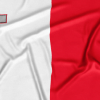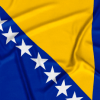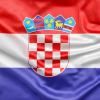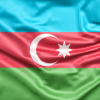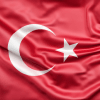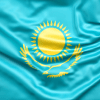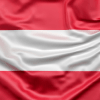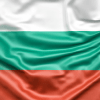ABOUT ROMANIA

Romania, located in southeastern Europe, is a country renowned for its rich history, diverse cultural heritage, and breathtaking natural landscapes. Its strategic location at the crossroads of Central, Eastern, and Southeastern Europe has shaped its cultural identity and historical significance over the centuries.
Square – 238,397 square kilometers;
Capital – Bucharest;
National language – Romanian;
Currency – Romanian leu (RON).
Romania’s cultural heritage is a vibrant mosaic of artistic expression, traditional craftsmanship, and folklore, reflecting the country’s diverse ethnic, linguistic, and regional identities. With a population of over 19 million people, Romania boasts a vibrant society that reflects a fusion of ancient traditions, modern influences, and a dynamic cultural tapestry.
Map
Romania is bordered by several countries, including Ukraine to the north, Hungary to the west, Serbia to the southwest, Bulgaria to the south, and Moldova to the east. The country’s topography is characterized by the Carpathian Mountains, which traverse the central region, offering stunning alpine landscapes, dense forests, and picturesque hiking trails. The Carpathians not only contribute to the country’s scenic beauty but also provide opportunities for outdoor activities, including skiing and wildlife observation. Romania is home to the fertile plains of the Danube River Basin, which supports extensive agricultural cultivation and contributes to the country’s food production.Â
Language

The Romanian language, a Romance language that evolved from Latin, is the official language of the country. It serves as a vital component of Romania’s cultural identity and plays a significant role in preserving the country’s linguistic heritage. As a Romance language with roots in Latin, Romanian shares linguistic similarities with other Romance languages such as Italian, French, Spanish, and Portuguese. It serves as the primary means of communication and cultural expression for the majority of the population, playing a vital role in preserving the country’s rich literary tradition, oral folklore, and historical legacy.
CultureÂ

The culture of Romania is a rich tapestry woven from a blend of historical influences, diverse traditions, and artistic expressions that reflect the country’s complex heritage and vibrant social fabric. Rooted in a fusion of Eastern and Western civilizations, Romanian culture encompasses various artistic disciplines, folklore traditions, culinary delights, and a strong sense of community that exemplifies the nation’s cultural vibrancy and diversity. National culture is deeply intertwined with a rich tapestry of folklore, rituals, and traditional customs that have been passed down through generations. Folklore traditions encompass a vibrant array of music, dance, and storytelling, often celebrated during local festivals, weddings, and community gatherings.
ClimateÂ

Romania experiences a temperate-continental climate characterized by four distinct seasons, offering a diverse range of climatic conditions throughout the year. The country’s geographical diversity, with its combination of mountains, plains, and coastline, contributes to variations in temperature, precipitation, and weather patterns across different regions. Romania’s climate variability, influenced by its geographical features and proximity to the Black Sea, contributes to the country’s rich biodiversity and agricultural productivity, playing a crucial role in sustaining the nation’s rural economy and food production.
EconomyÂ

Romania’s economy is a developing market economy that has experienced significant growth and modernization in the last 20 years. The country’s economy is diversified across various sectors, including Agriculture, Manufacturing, Services, Information Technology, and Tourism. Romania’s integration into the European Union has facilitated trade partnerships, market access, and foreign investment, promoting economic stability and regional cooperation. The country’s membership in the EU has led to the implementation of economic reforms, infrastructure development projects, and regulatory harmonization, aligning Romania’s policies and practices with European standards and fostering a conducive business environment for both domestic and international enterprises.
PopulationÂ

Romania, a vibrant country situated in southeastern Europe, has a population of over 19 million people, making it one of the more populous nations in the region. The population of Romania has experienced various shifts and demographic trends over the years, influenced by factors such as historical events, social changes, and economic developments. The ethnic composition of Romania’s population is diverse, reflecting a rich tapestry of cultural identities and linguistic traditions. The country is home to significant minority groups, including Hungarians, Roma (Romani people), Germans, and Ukrainians, among others. The ethnic communities have made substantial contributions to Romania’s cultural landscape, enriching the nation’s social fabric and fostering a spirit of multiculturalism and tolerance.
Transportation

Romania has a well-developed and efficient transportation system that encompasses various modes of travel, facilitating the movement of people and goods across the country and beyond. The transportation infrastructure in Romania comprises a network of roads, railways, air transport facilities, and public transportation services, contributing to the country’s economic development, tourism industry, and regional connectivity. Roadways serve as a critical component of Romania’s transportation network and include national highways, expressways, and local roads, providing essential links between urban centers and facilitating the transportation of goods and services. Public transportation services, including buses, trams, trolleybuses, and metros, operate in major cities and urban centers, providing convenient and accessible travel options for commuters and residents.






